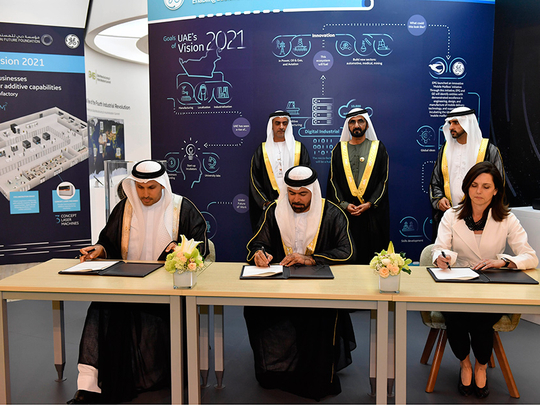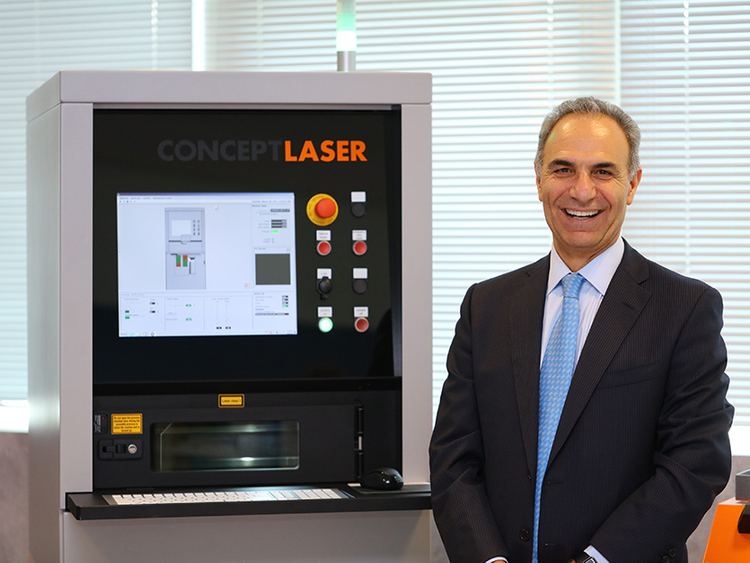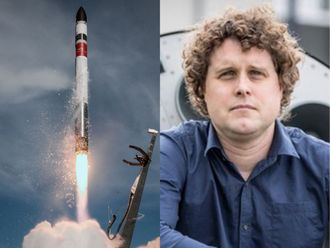
ABU DHABI
GE, the US multinational industrial firm, has partnered with Mubadala Development Company (Mubadala), the Dubai Future Foundation and GE Additive to establish its first microfactory outside of America, the company announced in a press conference on Tuesday.
Speaking at the Global Manufacturing and Industrialisation Summit, senior executives from GE laid out their vision for the future of industry and design, specifying the UAE as a key destination for much of this new technology.
His Highness Shaikh Mohammad Bin Rashid Al Maktoum, Vice President and Prime Minister of the UAE and Ruler of Dubai, was in attendance for the signing of the Memorandum of Understanding (MoU) on Monday night, at the summit in Abu Dhabi. A microfactory is essentially an open platform project that pools the resources and harnesses the power of a community to solve problems, and create innovative solutions. It could be launched at a university, or even in a residential development.
GE’s goal is to build both an Abu Dhabi-based microfactory focused on serving industrial companies, as well as a Dubai-based microfactory that is tailored more towards serving consumer goods and services companies.
Shaikh Mohammad was joined at the ceremony by Mohammad Abdullah Al Gergawi, Minister of Cabinet Affairs in the Federal Government of the UAE and Vice-Chairman and Managing Director of the Dubai Future Foundation, who said: “as a nation, our remit is a clear one — identify and act upon unique and sustainable partnerships that provide significant advancements across all sectors, in line with Vision 2021.”
Al Gergawi added that “the leadership of the UAE is a firm believer in the exceptional opportunities presented by a proactive and future focused strategy, enabling individuals, companies, sectors and the nation to progress through the use of innovative and collaborative tools and platforms. These microfactories are a glimpse of what the future represents, combining innovation and educational ecosystems with fast, efficient and sustainable manufacturing capabilities. The possibilities are truly limitless.”
The aim of a microfactory is to distribute the power of a factory among the residents of a community, accelerating customer-based design and problem solving.
The innovative idea is expected to play a crucial role in the upscaling of design and manufacturing capabilities in the UAE and the broader region, allowing for the merger of innovative and forward thinking ideas with the ability to use cutting edge additive manufacturing technology in the production of specialised components.
Speaking in an interview with Gulf News on one particular element of this changing industrial landscape, Mohammad Ehteshami, Vice President of GE Additive, described what he called “the next revolution” in the Industrial Revolution.
“In the past,” said Ehteshami, “in order to make a pound of something you had to start with several pounds of different materials. Additive is different. If you want to make a pound of something, you start with 0.01 pounds. This saves energy, it saves labour, it saves time, and it saves material.”
The senior executive said that his division, which he intends to grow to a $1 billion business in the next decade, has received “significant” interest from the UAE government.
Ehteshami believes that this “revolutionary” technology will allow the UAE, and other similar countries, to “leapfrog” competitors, despite having a relatively nascent manufacturing industry.
“Additive allows us to help them without having the heavy industries. For example, a metre-and-a-half machine can now do the same as a 500 metre machine. It doesn’t require a lot of infrastructure or heavy industry. The simplification is incredible,” he said.
Ehteshami added that he expected a deal for the technology to be completed with the UAE government by late 2017, or early 2018, at the latest.
GE has invested approximately $1.5 billion in the additive manufacturing and technology space at GE’s Global Research Center (GRC).
It has also developed additive applications across six GE businesses, created new services applications across the company, and earned 346 patents in powder metals used for the additive process. In another rapidly advancing manufacturing sector, Ehteshami confirmed that the company was experimenting heavily with 3D printing.
He revealed that GE had conducted an experiment to see how much of a commercial helicopter engine they could print, discovering that the answer was “about 40 per cent of one.”
“We managed to get it down from 900 parts to 14 parts. Of those 900 parts, we were able to take 40 per cent of the weight out and 60 per cent of the cost out,” Ehteshami added.













